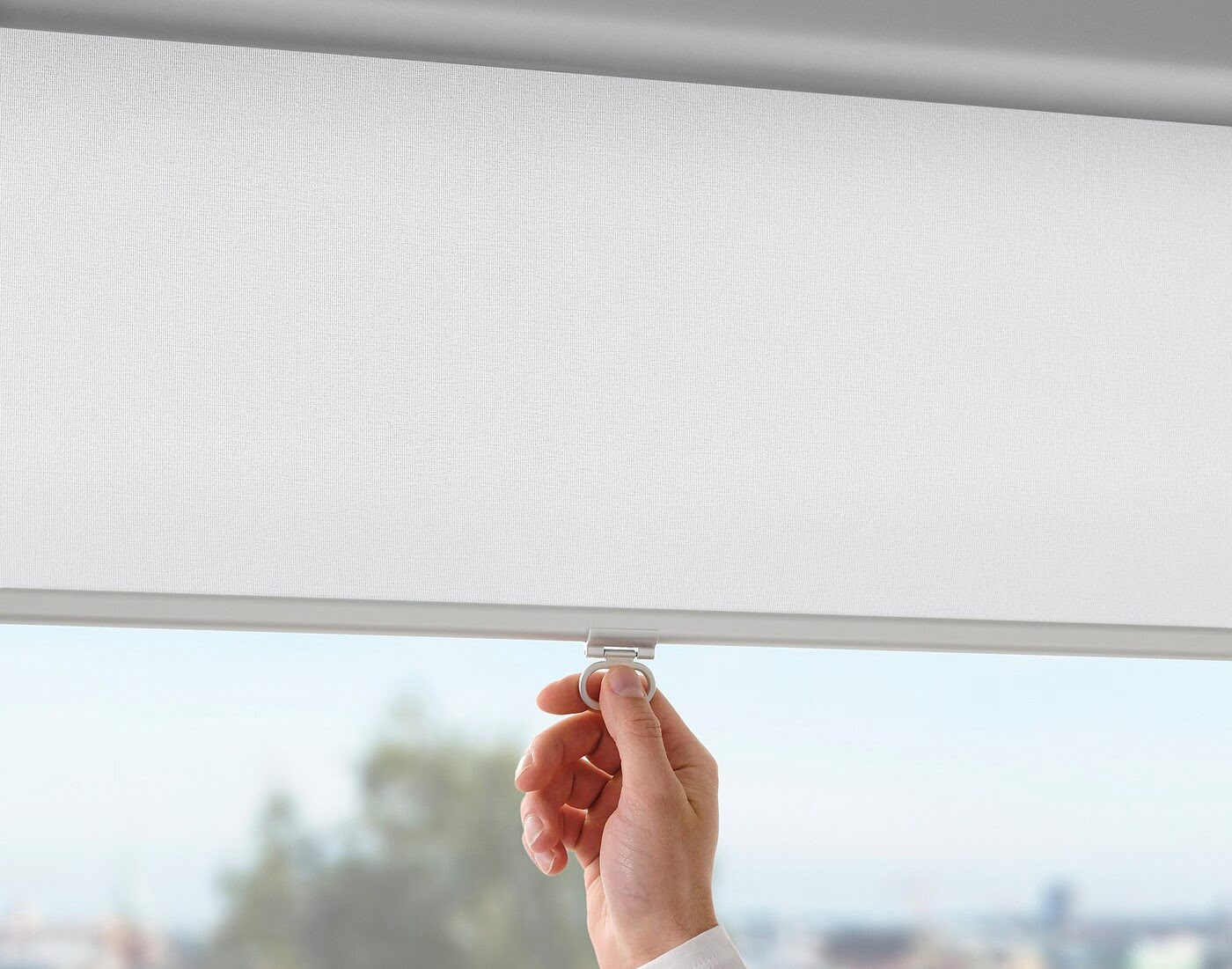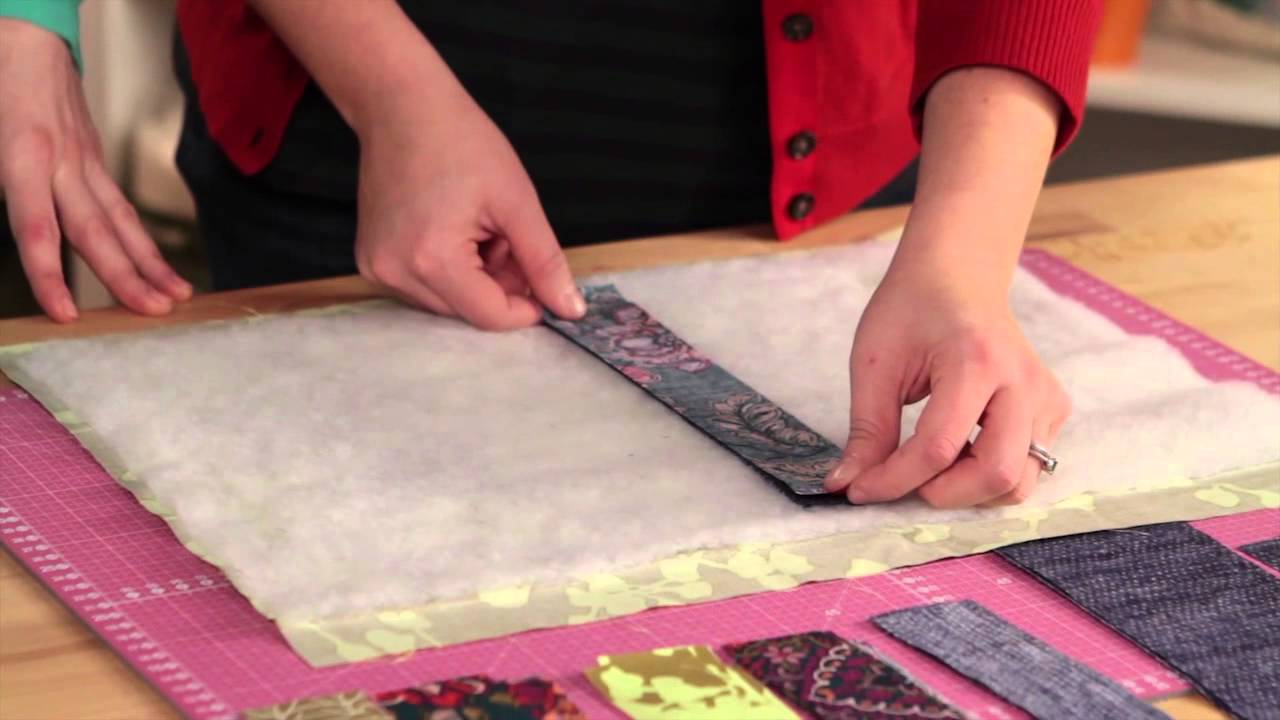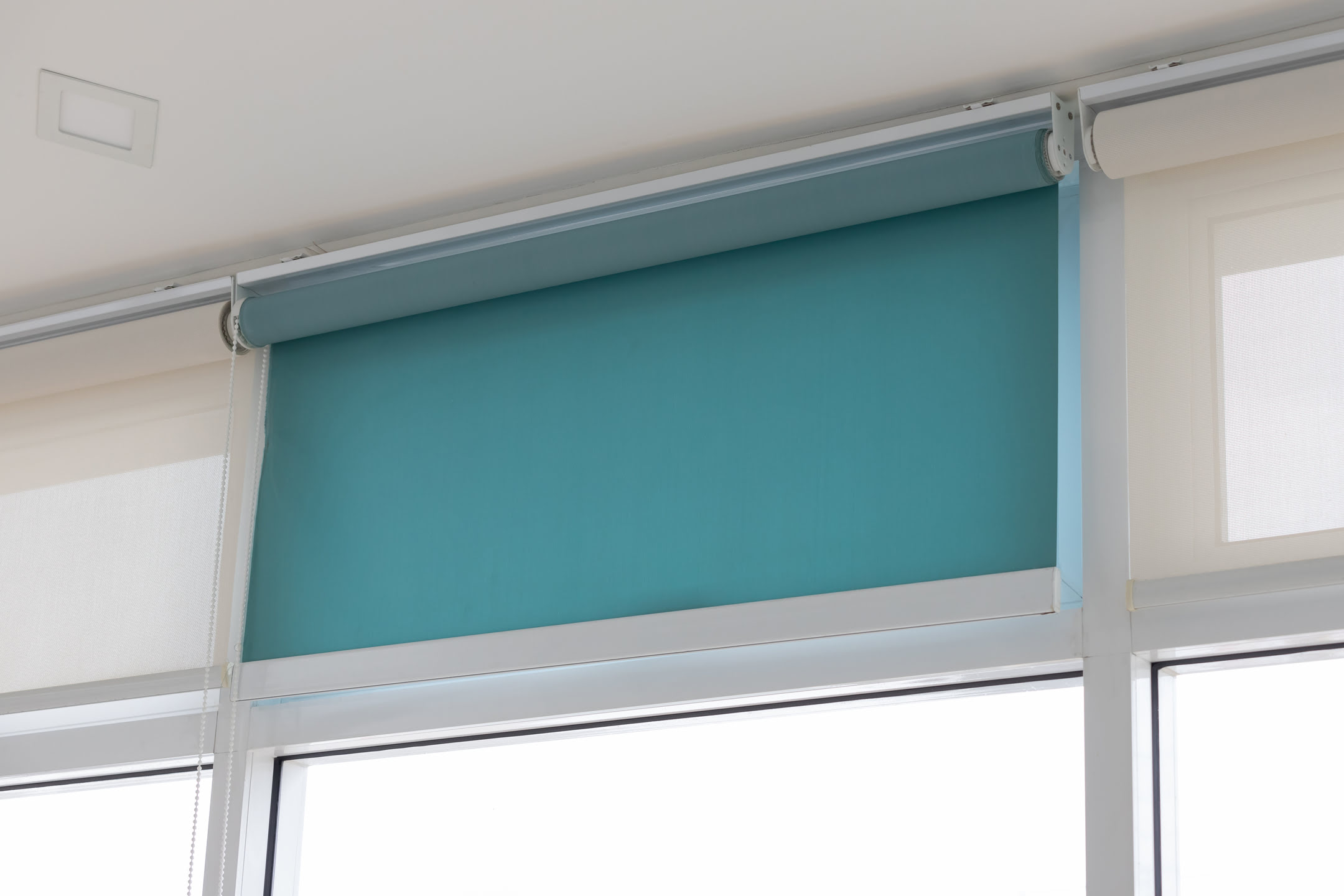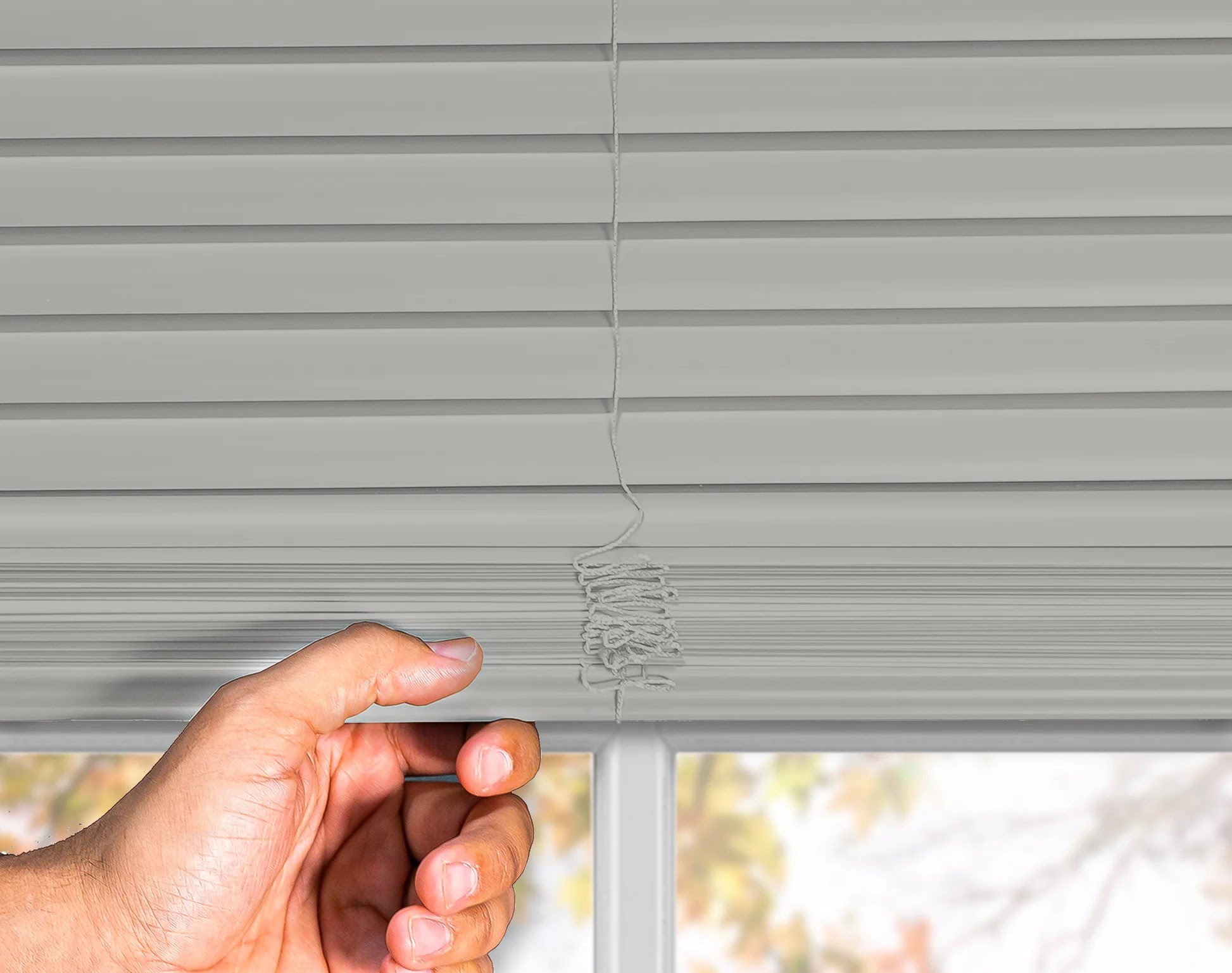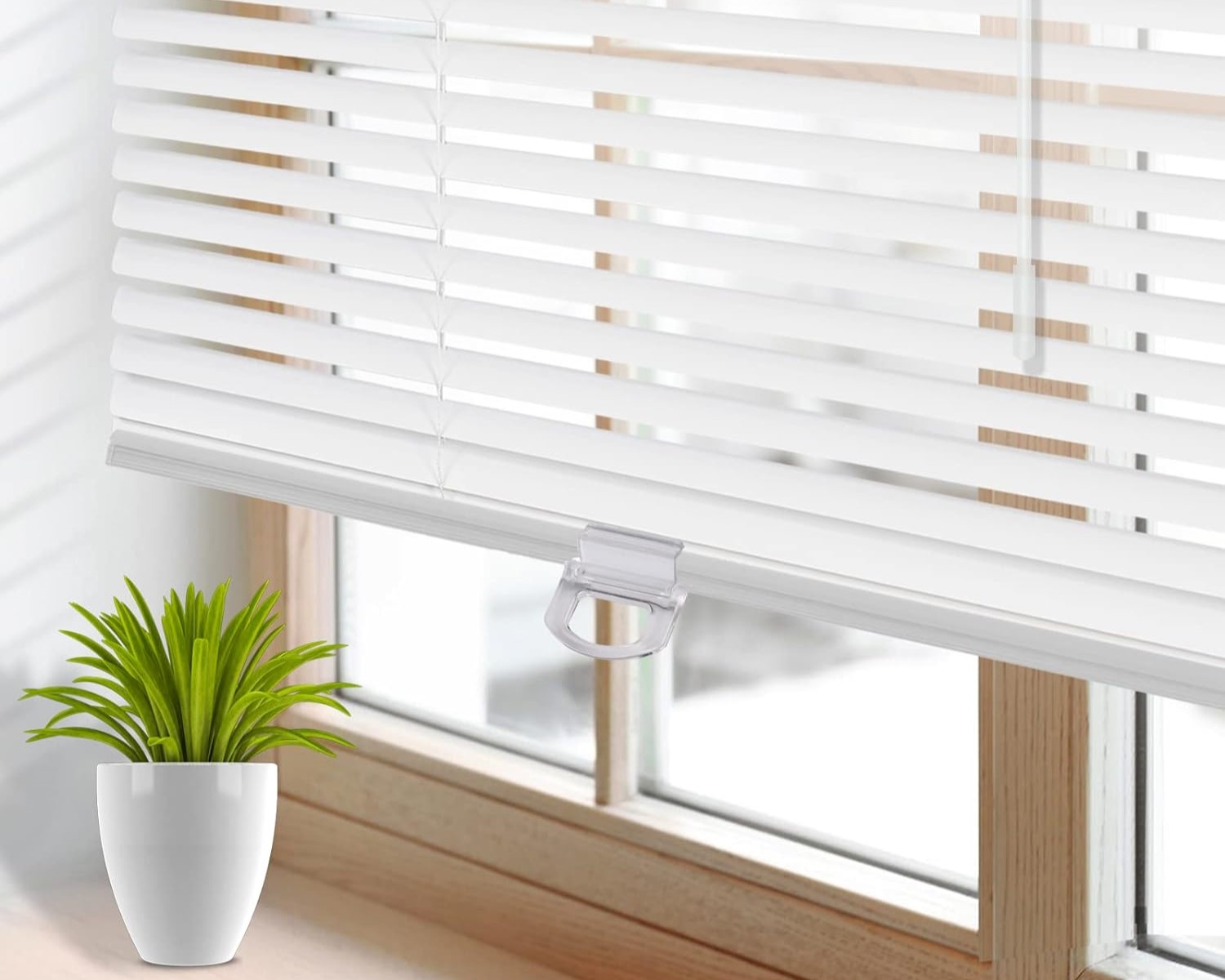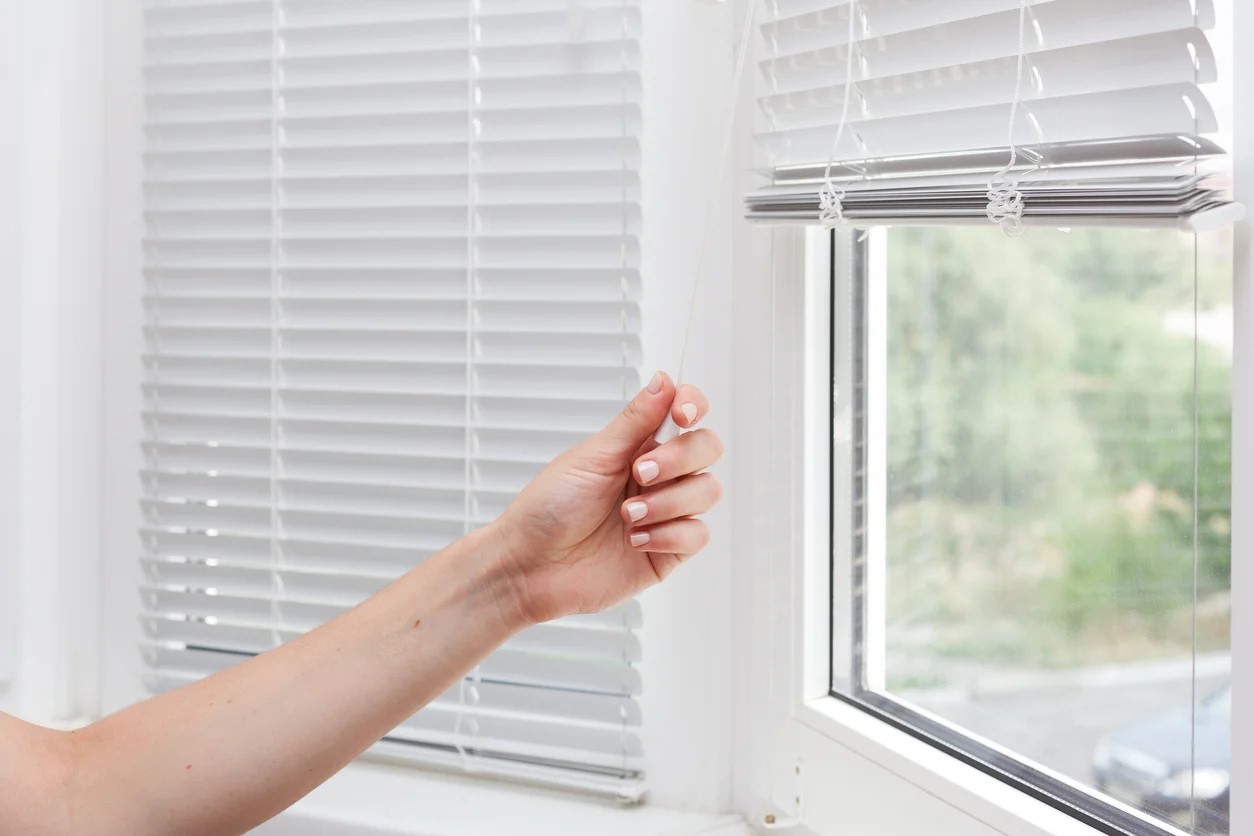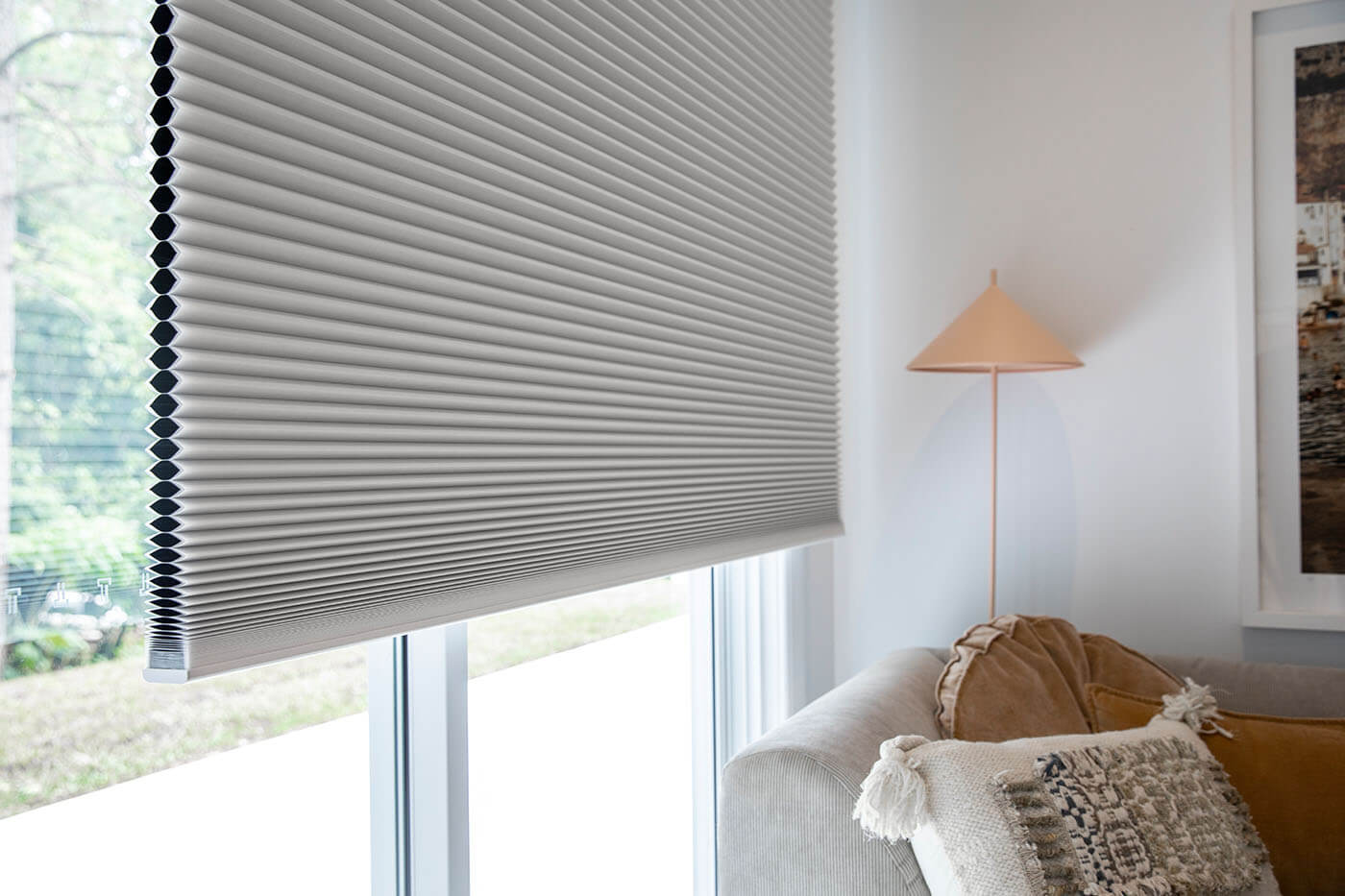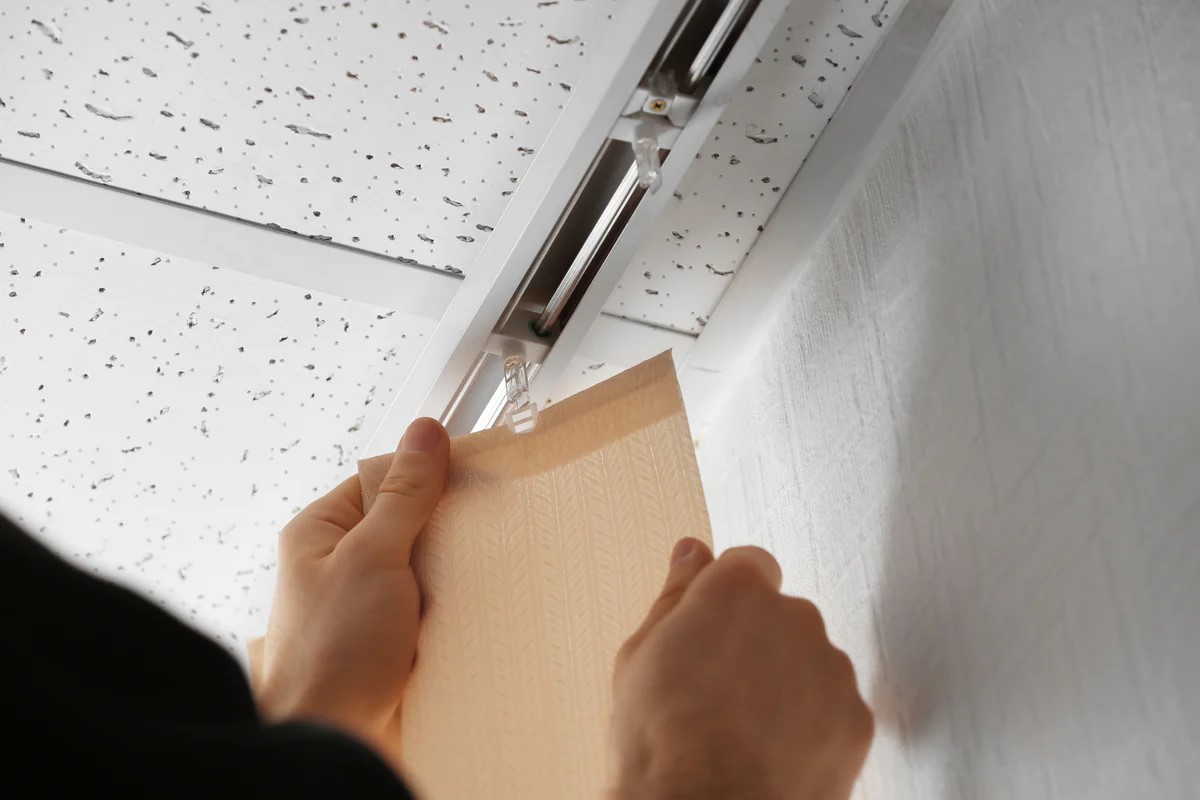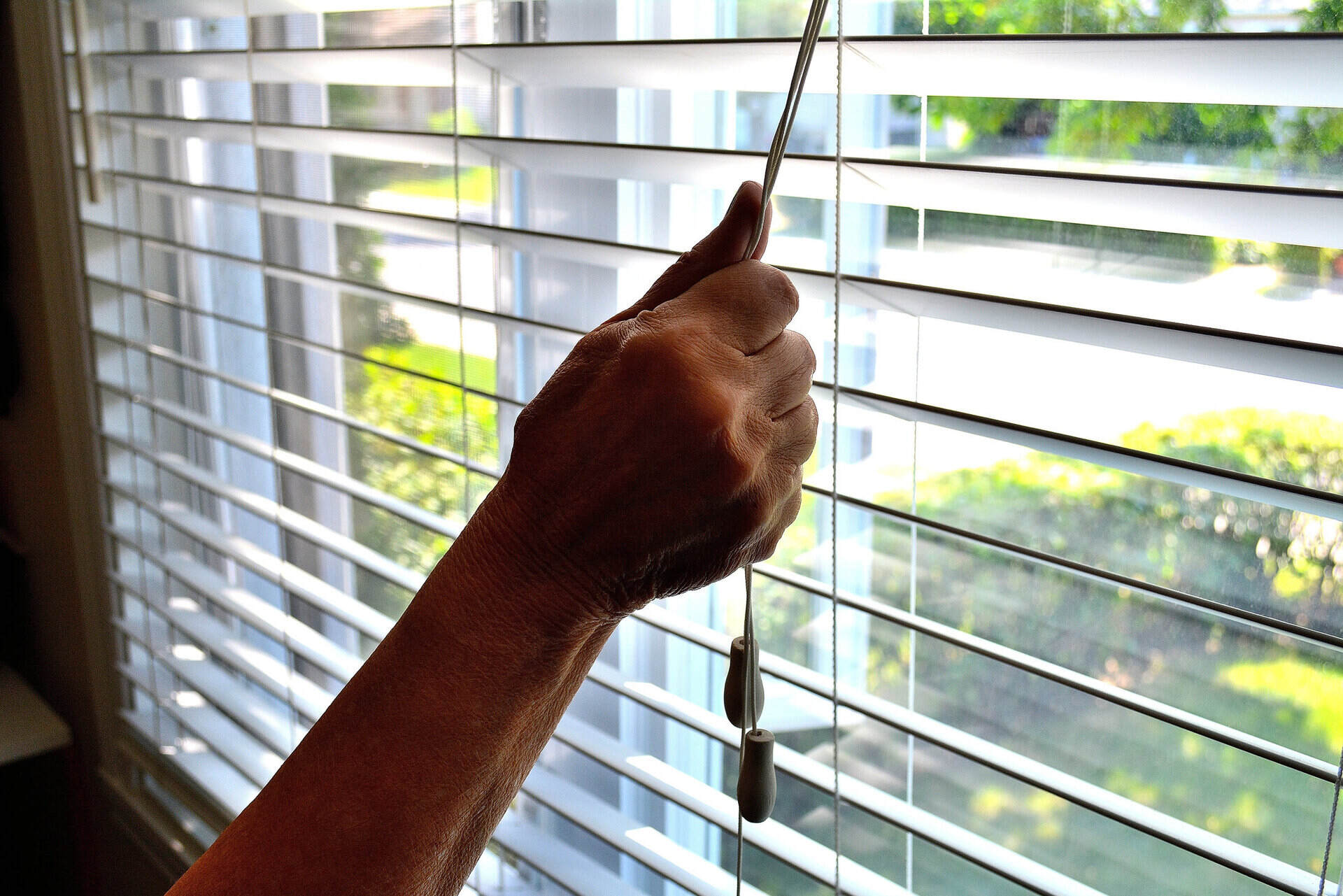

Articles
How Do You Make Blinds Go Down
Modified: September 1, 2024
Learn how to make blinds go down with our informative articles. Discover helpful tips and techniques for easy blind operation.
(Many of the links in this article redirect to a specific reviewed product. Your purchase of these products through affiliate links helps to generate commission for Storables.com, at no extra cost. Learn more)
Introduction
Blinds are a common and versatile window treatment option that allows you to control the amount of light and privacy in your home. Whether you prefer manual blinds or the convenience of motorized ones, knowing how to make them go down is essential. In this article, we will explore the different types of blinds and provide step-by-step guides on how to lower them effectively.
Understanding the mechanism of blinds is crucial before diving into the specific methods. Most blinds consist of slats or louvers connected by strings or cords. By manipulating these cords, you can adjust the position of the slats to control the amount of light entering the room. Additionally, some blinds have manual controls, while others feature more sophisticated motorized systems.
Now, let’s delve into the step-by-step guides for different types of blinds and explore the techniques for making them go down.
Key Takeaways:
- Master the art of lowering blinds with these step-by-step guides for manual, corded, cordless, and motorized blinds. Enjoy privacy and controlled lighting effortlessly.
- Troubleshoot common blind issues like uneven slats and motorized blinds not operating with simple tips. Keep your blinds functioning optimally for a perfect ambiance.
Read more: How Do You Fix Pull Down Blinds
Understanding the Mechanism of Blinds
Before learning how to make blinds go down, it’s essential to have a basic understanding of how they function. Blinds typically consist of horizontal or vertical slats that can be adjusted to control the amount of light and privacy in a room. Let’s take a closer look at the different components and mechanisms of blinds.
1. Slats or Louvers: The slats or louvers are the individual sections of the blind that can be tilted or angled to allow more or less light into the room. The slats can be made of various materials such as wood, vinyl, or aluminum.
2. Strings or Cords: These are used to connect the slats or louvers and allow them to move simultaneously. By pulling or releasing the cords, you can control the position of the slats, either raising or lowering them.
3. Tilt Mechanism: It is responsible for adjusting the angle of the slats to control the amount of light and privacy. Depending on the type of blind, this mechanism can be operated manually or through a motorized system.
4. Lift Mechanism: This component allows you to raise and lower the blinds as a whole. It can be in the form of cords, chains, or a motorized system. By manipulating the lift mechanism, you can make the blinds go up or down.
5. Headrail: The headrail is the top portion of the blind where the slats are attached. It also houses the mechanisms that control the blinds’ movement.
Understanding these key components of blinds will help you navigate the different methods for making them go down. Whether you have manual blinds with cords or prefer the convenience of motorized blinds, being familiar with the mechanism will make the process much easier.
Manual Blinds: Step-by-Step Guide
If you have manual blinds with cords, follow this step-by-step guide to make them go down:
- Locate the cord: Find the cord that is used to raise and lower the blinds. It is usually located near the right or left side of the blinds.
- Gently pull the cord: Grasp the cord and pull it downward. This will release the mechanism and allow the blinds to lower.
- Control the speed: To ensure a smooth descent, control the speed at which you pull the cord. Avoid pulling too fast or with excessive force, as this can cause the blinds to slam down.
- Stop at the desired height: Once the blinds have reached the desired height, release the cord. The blinds should stay in place until you are ready to raise or adjust them again.
It’s important to note that the specific steps may vary depending on the style and design of your manual blinds. Some blinds may have additional mechanisms, such as a locking mechanism, to keep the blinds in place once they are lowered. Always refer to the manufacturer’s instructions for your specific blinds to ensure proper operation.
Remember to handle the cords with care and keep them out of reach of children as they can pose a safety hazard. Make sure that the cords are properly secured and away from areas where they can become tangled or cause accidents.
Now that you have successfully lowered your manual blinds, you can enjoy the benefits of increased privacy and controlled lighting in your space. However, if you prefer a cordless or motorized option, continue reading to learn how to operate those types of blinds.
Corded Blinds: Step-by-Step Guide
If you have corded blinds, follow these steps to lower them:
- Locate the cord: Look for the cord that is used to raise and lower the blinds. It is usually on the right or left side of the blinds, similar to manual blinds.
- Check for a locking mechanism: Some corded blinds have a locking mechanism to keep them in place once lowered. If your blinds have a lock, make sure it is unlocked before proceeding.
- Gently pull the cord: Grasp the cord and pull it downward. As you pull, the blinds should start lowering.
- Control the speed: Just like with manual blinds, it’s important to control the speed at which you pull the cord. This ensures a smooth descent and prevents the blinds from slamming down.
- Stop at the desired height: Once the blinds have reached the desired height, release the cord. The blinds should stay in place until you are ready to raise or adjust them again.
As with manual blinds, it’s crucial to follow the manufacturer’s instructions and guidelines specific to your corded blinds for proper operation. Additionally, ensure that the cords are kept out of the reach of children and properly secured to prevent any accidents or entanglement.
Now that you know how to lower your corded blinds, you can effortlessly control the amount of light and privacy in your space. However, if you are interested in a cordless option, keep reading to learn how to operate cordless blinds.
To make blinds go down, simply pull the cord or tilt the wand in the direction that lowers the blinds. If they are cordless, gently push or pull the bottom rail to lower them.
Cordless Blinds: Step-by-Step Guide
Cordless blinds provide a sleek and convenient option for controlling light and privacy without the hassle of cords. To lower your cordless blinds, follow these step-by-step instructions:
- Locate the bottom rail: The bottom rail is the solid piece at the bottom of the blinds that holds the slats together.
- Gently push down on the bottom rail: Using your hand or finger, apply gentle pressure to the bottom rail and push it downwards. This will release the mechanism and allow the blinds to lower.
- Control the speed: Similar to manual and corded blinds, control the speed at which you push down on the bottom rail to ensure a smooth descent. Avoid applying too much force to prevent the blinds from slamming down.
- Stop at the desired height: Once the blinds have reached the desired height, release the pressure on the bottom rail. The blinds should stay in place until you are ready to raise or adjust them.
One of the key advantages of cordless blinds is their user-friendly operation. Without cords to deal with, cordless blinds provide a safer and cleaner look. However, it’s still important to handle the blinds with care and avoid excessive force when operating them.
Now that you have successfully lowered your cordless blinds, you can enjoy the convenience and aesthetic appeal they offer. If you’re interested in a more advanced and automated option, read on to discover how to operate motorized blinds.
Read more: How To Fix Window Blinds That Won’t Go Down
Motorized Blinds: Step-by-Step Guide
Motorized blinds provide the ultimate convenience in controlling your window coverings. With motorization, you can effortlessly raise and lower your blinds with just a touch of a button or through a remote control. Here is a step-by-step guide on how to operate motorized blinds:
- Locate the control device: Depending on your motorized blinds system, the control device can be a wall switch, a remote control, or even a smartphone app.
- Ensure the blinds are connected to power: Motorized blinds require power to operate, so make sure they are properly connected to a power source.
- Determine the desired position: Decide whether you want to raise or lower the blinds and to what height or level of openness.
- Use the control device: Press the appropriate button on the control device to lower the blinds. Some systems may allow you to preset specific positions or schedule automatic adjustments.
- Stop at the desired height: Once the blinds have reached the desired height, release the button. The motorized system will stop and hold the blinds in place.
Motorized blinds offer not only convenience but also the flexibility to adjust your blinds from anywhere in the room. Additionally, some systems can be integrated with smart home automation, allowing you to control the blinds through voice commands or program them to operate automatically based on timers or sensors.
While motorized blinds provide a cutting-edge solution, it’s essential to follow the manufacturer’s instructions and properly maintain the motorized system to ensure its longevity and optimal performance.
Now that you know how to operate motorized blinds, you can effortlessly control your window coverings with ease and precision.
Troubleshooting Common Issues
While blinds are generally reliable and easy to operate, occasionally you may encounter some common issues. Here are a few troubleshooting tips to help you address common problems with your blinds:
- Blinds not lowering or raising smoothly: If your blinds are difficult to lower or raise, check for any obstructions or tangled cords. Ensure that the cords are properly aligned and not twisted or tangled. Lubricating the mechanism may also help if it is sticking.
- Blinds not staying in place: If your blinds do not remain at the desired height and keep slowly rising or lowering, the tension may need adjustment. Consult the manufacturer’s instructions on how to adjust the tension of your specific blinds.
- Slats not tilting properly: If the slats of your blinds are not tilting to the desired angle, check if any slats are stuck or obstructed. Gently tap or adjust the slats to ensure they are free from any obstructions.
- Motorized blinds not operating: If your motorized blinds are not responding to commands, check the batteries in the remote control. If the blinds are connected to a power source, ensure that the power supply is functioning correctly. If the issue persists, consult the manufacturer or a professional technician for further assistance.
- Uneven slats: If the slats of your blinds appear uneven or crooked, gently align them by hand. If necessary, adjust the tilt mechanism or seek professional help if the problem persists.
Remember, if you’re unsure about how to troubleshoot an issue or if you encounter a more complex problem, it’s always best to consult the manufacturer’s guidelines or seek assistance from a professional for proper diagnosis and repair.
By being aware of these common problems and their potential solutions, you can effectively troubleshoot and address issues that may arise with your blinds, ensuring their optimal functionality and longevity.
Conclusion
Blinds are an essential window treatment that allows you to control light, privacy, and aesthetics in your home. Whether you have manual blinds, corded blinds, cordless blinds, or motorized blinds, knowing how to make them go down is crucial for enjoying their benefits to the fullest.
In this article, we covered step-by-step guides for each type of blinds. For manual blinds, locate the cord and gently pull it to lower the blinds. Corded blinds require you to find the cord, ensure the lock is disengaged, and pull it downward. Cordless blinds can be lowered by applying gentle pressure on the bottom rail. And for motorized blinds, use the control device to lower them to the desired position.
Additionally, we discussed troubleshooting tips for common issues like uneven slats, difficulties in raising or lowering, or motorized blinds not operating correctly. Following these troubleshooting guidelines can help you overcome these obstacles and maintain the optimal functionality of your blinds.
Remember to always refer to the manufacturer’s instructions specific to your blinds, as each type may have its own unique features and requirements. Additionally, prioritize safety by keeping cords out of reach and properly securing them.
By understanding the mechanisms and following the step-by-step guides provided in this article, you can confidently operate and maximize the benefits of your blinds. Whether you’re seeking privacy, controlling light, or enhancing the ambiance of your space, your blinds are ready to help you create the perfect atmosphere.
Frequently Asked Questions about How Do You Make Blinds Go Down
Was this page helpful?
At Storables.com, we guarantee accurate and reliable information. Our content, validated by Expert Board Contributors, is crafted following stringent Editorial Policies. We're committed to providing you with well-researched, expert-backed insights for all your informational needs.
